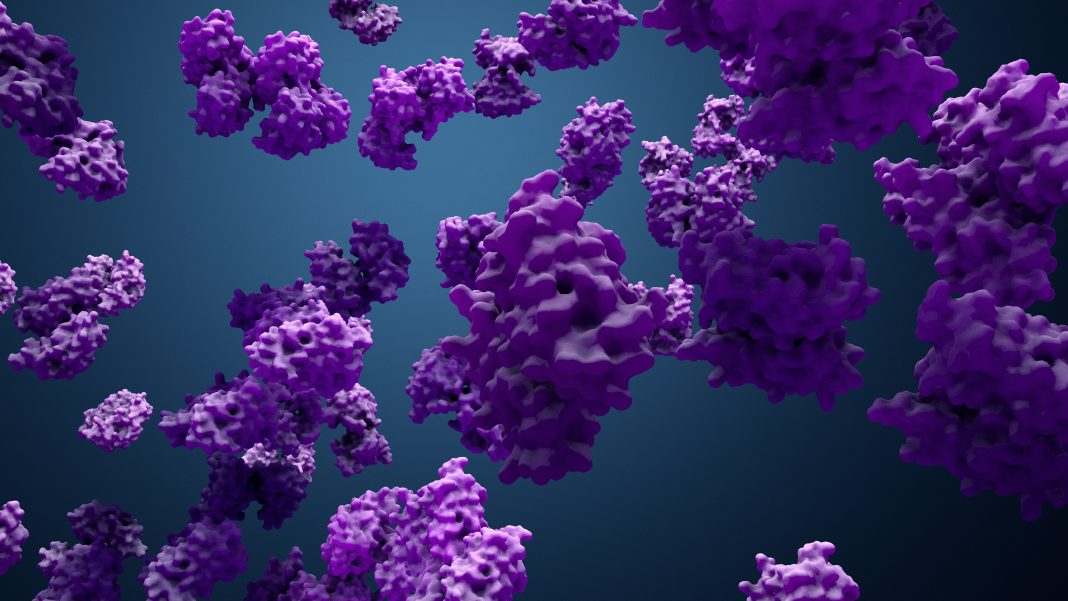SandboxAQ has announced a collaboration with Nvidia to combine its large quantitative models (LQMs) with the Nvidia CUDA-accelerated Density Matrix Renormalization Group (DMRG) algorithm. According to SandboxAQ, the combined technologies will make it possible to perform “highly accurate quantitative AI simulation of real-life systems” that go “beyond what large language models and other AI models can currently do.” The company also claims computing speeds of more than 80x for these simulations with Nvidia’s technology compared to computing on traditional 128-core central processing units.
Nadia Harhen, general manager for SandboxAQ’a AI simulation division, told GEN in an interview that the combined technologies will support computational chemistry applications in multiple industries including biopharma, chemicals, and materials sciences. SandboxAQ already has customers in some of these spaces who rely on their equation-based computing technology, which forms the crux of the company’s business. The technology uses complex physics-based calculations to generate the data needed to train SandboxAQ’s LQMs based on various inputs including real-world observations and physical properties of various molecular structures.

These models can predict molecular behavior and generate molecular structures with desired properties. “Equation-based computing is a highly efficient way of programming computers,” Harhen said. This compute paradigm makes it possible “to create different applications to serve our customer needs in drug discovery.
” That includes tools such as AQ-FEP, an absolute free energy perturbation model for stack ranking potential drug molecules that are most likely to succeed. “We have a much more efficient system with LQMs because of the quantitative nature of what we do and the infrastructure that we’ve built internally in order to generate the data and train these models,” she said. While LLMs work well for generating text and software code, making a difference in the drug discovery, chemicals, and materials industries requires more complex models.
“We have to invent new things that aren’t close to the training dataset. And this is where you actually have to ground the AI in the laws of physics,” she said. And now pairing LQMs with Nvidia’s technology will enable SandboxAQ to perform even more challenging computations faster.
For example, CUDA-DMRG can accurately model the catalytic activity of Cytochrome P450, an enzyme with a central role in drug metabolism and toxicity. Those models can then be used to screen candidate compounds for potential toxicity in silico. The partners have published a pre-print that shares results from applying the DMRG algorithm implemented on Nvidia hardware to simulate cytochrome P450.
And that’s just one of the molecular systems that SandboxAQ is working on. Among other interests, Harhen said that the company is also working on modeling catalysts that can penetrate the blood-brain barrier. Interest in this particular area grew out of an ongoing collaboration with scientists at the University of California, San Francisco’s Institute for Neurodegenerative Diseases aimed at using AI-powered simulations to try to identify new candidate treatments for neurodegenerative disorders including Parkinson’s disease and Alzheimer’s disease.
“When you do drug discovery, you need this paradigm of ‘explore and exploit.’ You need to explore the chemical space but then you need somewhere to focus,” Harhen said. “We’ve really mastered this way to comb through the clinical space and figure out exactly where to hone in on and then exploit that area and optimize against it.
” Unsurprisingly, SandboxAQ’s technology has caught the attention of some big players in the pharmaceutical industry. Last year when SandboxAQ announced collaborations with AstraZeneca and Sanofi. The company also has a partnership with biotechnology company Flagship Pioneering focused on target identification.
Interest in AI-based technologies has spiked among biopharma and biotechnology companies in recent years. And more companies will likely want to explore SandboxAQ’s technology for themselves because of the increased speed and computational power provided by the Nvidia partnership. The collaboration also benefits Nvidia as well.
In Harhen’s view, SandboxAQ offers something different from the traditional AI and large language models (LLMs) that typically use Nvidia’s technology, and provides an avenue for Nvidia to expand its footprint. Earlier this year, Nvidia founder and CEO Jensen Huang recently discussed the company’s plans in the life sciences space including its expansion of BioNeMo, its generative AI platform for drug discovery. AI has become something of a buzzword in the market with an array of companies claiming to provide solutions that can accelerate compound identification or design powerful molecules that bind more effectively to their targets.
But not all forms of AI are suited for addressing the kinds of questions that drug developers need answers to. “Many companies are making incremental changes using AI and they are having breakthroughs,” Harhen acknowledged. Slow and steady improvements can be a good thing but she believes that the industry needs a different kind of AI to truly make meaningful progress on challenging diseases.
“The LLMs and AI that are out there are really only able to predict data that’s very close to its training dataset. You can’t make leapfrog discoveries using LLMs or traditional AI,” she said. “We want to know if it’s not going to work as quickly as possible so that we can optimize those models and keep moving versus finding out seven years down the road.
That’s the beauty of [SandboxAQ’s] compute paradigm.” Previous article.



















